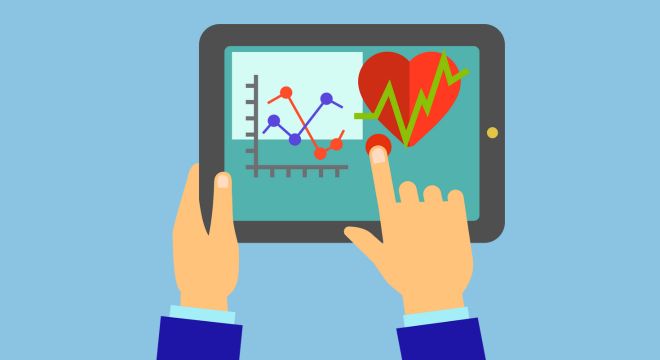Advances in technology offer the promise of more efficiency in healthcare and, ultimately, better patient care. However, health technology also brings risk. A recent report by ECRI, a global healthcare safety nonprofit organization, highlights critical risks in healthcare for 2025 that could compromise patient safety—from oxygen therapy mishaps to cybersecurity breaches, IV infections, and delayed medical device reporting.
These hazards emphasize the importance of robust education and training for staff in healthcare settings. Addressing risks like oxygen therapy mishaps, cybersecurity vulnerabilities, inadequate incident reporting, and IV infection control requires well-informed staff who are equipped to implement best practices.
By empowering staff with knowledge and practical tools, training programs help mitigate risks like those outlined in ECRI’s report, fostering safer care environments and more resilient healthcare systems. Let’s explore a few top risks for 2025 identified by ECRI and some solutions to prepare healthcare teams to meet today’s safety demands.
1. Oxygen Safety: Preventing Fires and Enhancing Patient Safety
The Risk:
Oxygen therapy presents a significant fire hazard. Fires fueled by oxygen-enriched environments can have devastating consequences, especially in home healthcare and long-term care settings. Improper handling, storage, or use of oxygen increases these risks.
A Solution:
Educate staff on:
- Proper storage and handling of oxygen tanks.
- Recognizing and mitigating fire risks in oxygen-enriched environments.
- Educating patients and families about safe oxygen use.
By addressing these areas, healthcare professionals can reduce fire hazards and ensure the safe use of oxygen therapy.
Oxygen Safety (PREVIEW)
2. Medical Device Reporting: Improving Safety and Compliance
The Risk:
Substandard medical devices and supplies are reaching healthcare settings, presenting potential harm to patients and staff. Healthcare staff can minimize risks by reporting device malfunctions and adverse events as outlined by the U.S. Federal Drug Administration (FDA).
A Solution:
Ensure staff understand:
- What constitutes a reportable event under FDA guidelines.
- How to document and report incidents promptly and accurately.
- The importance of reporting to improve device safety and regulatory compliance.
By fostering accountability and thorough incident reporting, staff are empowered to play a vital role in identifying trends, mitigating risks, and improving patient outcomes. For instance, if healthcare staff document malfunctioning infusion pumps or other critical devices effectively, this helps to ensure that manufacturers and regulators take timely corrective actions.
3. Cybersecurity: Protecting Devices from Cyberattacks
The Risk:
With a growing number of connected technology tools addressing everything from billing to electronic health records in healthcare environments, healthcare organizations are increasingly vulnerable to cyberattacks. Outdated software and inadequate safeguards are among the contributors to cybersecurity breaches that can disrupt patient care and compromise sensitive data.
A Solution:
Equip staff with the knowledge to:
- Recognize and respond to cybersecurity threats.
- Update and maintain devices to prevent vulnerabilities.
- Implement protocols for secure use of connected medical devices.
Training helps create a culture of vigilance, ensuring that healthcare professionals are proactive in securing devices like infusion pumps, ventilators, and patient monitors. Real-world scenarios help staff understand how cybersecurity breaches can directly impact patient safety and data integrity.
Cybersecurity Essentials: Attacks Against Network Connected Medical Device (PREVIEW)
4. IV Infection Control: Safeguarding Patients from Device-Associated Infections
The Risk:
Device-associated infections, particularly from IV lines and catheters, are among the list of top risks. Contaminants can enter the system without close attention to aseptic techniques. These infections can lead to serious complications, prolonged hospital stays, and increased healthcare costs.
A Solution:
Focus on teaching staff:
- Proper insertion, maintenance, and removal techniques for IV lines and catheters.
- How to recognize early signs of infection.
- Adherence to evidence-based protocols to prevent bloodstream infections.
If training emphasizes aseptic techniques, hand hygiene, and equipment disinfection, this ensures that healthcare staff can confidently minimize infection risks.
The Bottom Line: Proactive Training Bridges Gaps in Healthcare Safety
By proactively addressing these and other hazards, healthcare staff can prevent incidents that endanger patient safety and reduce liability for healthcare organizations.
ECRI’s report on the top 10 health technology hazards for 2025 is a call to action for healthcare organizations to prioritize safety through training and education. By equipping staff with the right knowledge and tools, we can prevent incidents, enhance patient care, and stay ahead of emerging risks.
How Showd.me Can Help
At Showd.me, we specialize in empowering post-acute care organizations with targeted, practical training solutions to address today’s most pressing safety challenges. Our courses are designed to equip your staff with the knowledge and skills they need to reduce risks and improve patient outcomes.
Here’s how we can help your team stay ahead:
- Comprehensive Training Library: Access specialized courses like Oxygen Safety in Healthcare, Protecting Network-connected Medical Devices, Medical Device Reporting, and IV Infection Control for Healthcare Workers.
- Tailored Learning Paths: Ensure your team receives training that directly addresses your organization’s unique safety needs and priorities.
- Expert Support: Partner with us to foster a culture of safety and compliance through ongoing education, practical tools and hands-on service.
Don’t wait to address the risks highlighted in ECRI’s report. Start building safer, more resilient healthcare systems today. Click here to learn more about our online training management services for post-acute care.



